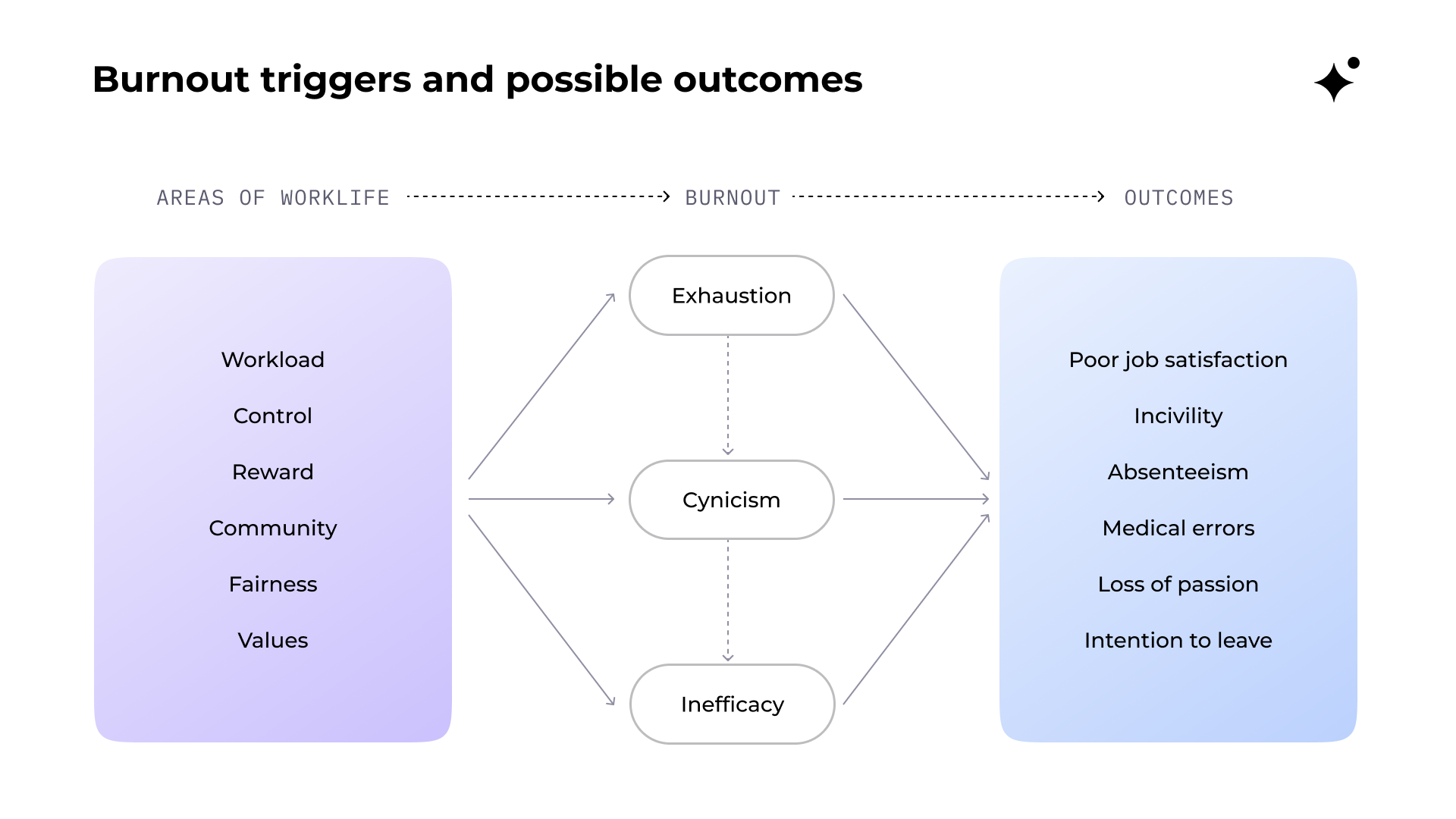New research shows burnout triggers for veterinary teams
Based on professional literature, Galaxy Vets’ own research, and thought leadership best practices, this paper offers actionable frameworks that can help reduce burnout in the veterinary teams
Burnout has been recognized as an occupational disease and it is taking an especially heavy social and economic toll on the veterinary profession. A recent survey revealed1 that nearly 70% of veterinarians have lost a colleague to suicide. Veterinary medicine is becoming an increasingly unattractive career option – a 2021 AVMA study found 2 that only 47% of veterinarians would recommend the profession, down3 from 76% in 2005. Other research from Cornell University estimated4 that the industry is losing $2 billion in revenue per year due to burnout and subsequent staff turnover. This highlights the critical need to develop systemic solutions to address emotional and physical well-being and work environment issues on the organizational level. It begins with identifying and eliminating the root causes of burnout.
Despite a common assumption, work overload is not the principal factor causing stress at work. Dr. Christina Maslach, an American social psychologist and professor emerita of psychology at the University of California-Berkeley, spent decades researching occupational burnout, and her Maslach Burnout Inventory is now considered a gold standard of assessing burnout among healthcare workers.
In 1999, Christina Maslach and Michael P. Leiter presented5 a model titled “Six areas of worklife” analyzing the organizational context of burnout and its contributors. The six dimensions – burnout triggers – are: control, workload, reward, community, fairness, and values. These findings suggest that the problem of burnout is far more complex – stemming from team culture, management style and the reward systems in place, and is highly driven by values as a moral compass that guides the organization.
Galaxy Vets, an employee-owned veterinary healthcare system in the U.S., continues its research of the burnout phenomenon in veterinary medicine and how it can be systematically addressed on the management level. The company published a new paper titled “From Surviving to Thriving: Eliminate These Six Burnout Triggers from Your Veterinary Hospital.”
Each section is structured in the following way:
Description of a burnout trigger
Impact on veterinary professionals
Comments from veterinary threads on Reddit exemplifying these situations
Tips for veterinary leaders on how to eliminate triggers
Actionable to-dos
Download the research paper for free: https://links.galaxyvets.com/BurnoutTriggers.
References
Nearly 70% of veterinarians have lost a colleague or peer to suicide, study finds. June 11, 2022. https://www.theguardian.com/society/2022/jun/11/nearly-70-of-veterinarians-have-lost-a-colleague-or-peer-to-suicide-study-finds
Volk J., Schimmack U., Strand E. Executive summary of the Merck Animal Health Veterinarian Wellbeing Study III and Veterinary Support Staff Study. Journal of the American Veterinary Medical Association. Volume 260: Issue 12. https://avmajournals.avma.org/view/journals/javma/260/12/javma.22.03.0134.xml
2015 Job Satisfaction Survey. April 28, 2015
Neill C., Hansen C., Salois M. The Economic Cost of Burnout in Veterinary Medicine. Front. Vet. Sci., 25 February 2022. https://www.frontiersin.org/articles/10.3389/fvets.2022.814104/full
Leiter M., Maslach C. Six areas of worklife: A model of the organizational context of burnout. Journal of Health and Human Services Administration. February 1999. https://www.researchgate.net/publication/12693291_Six_areas_of_worklife_A_model_of_the_organizational_context_of_burnout



